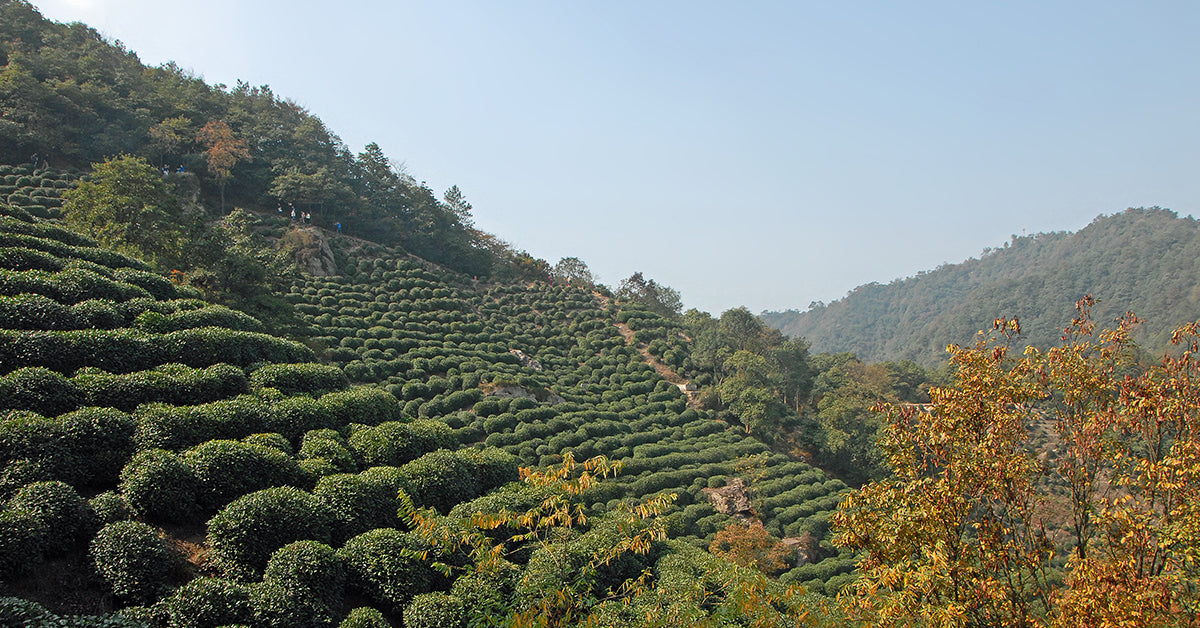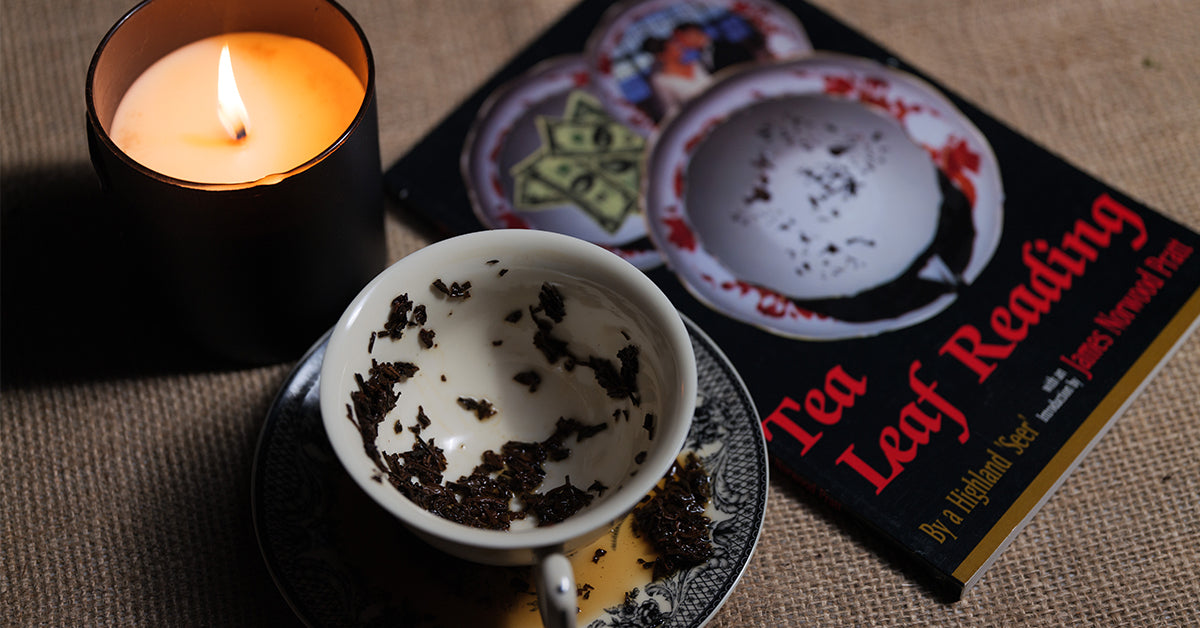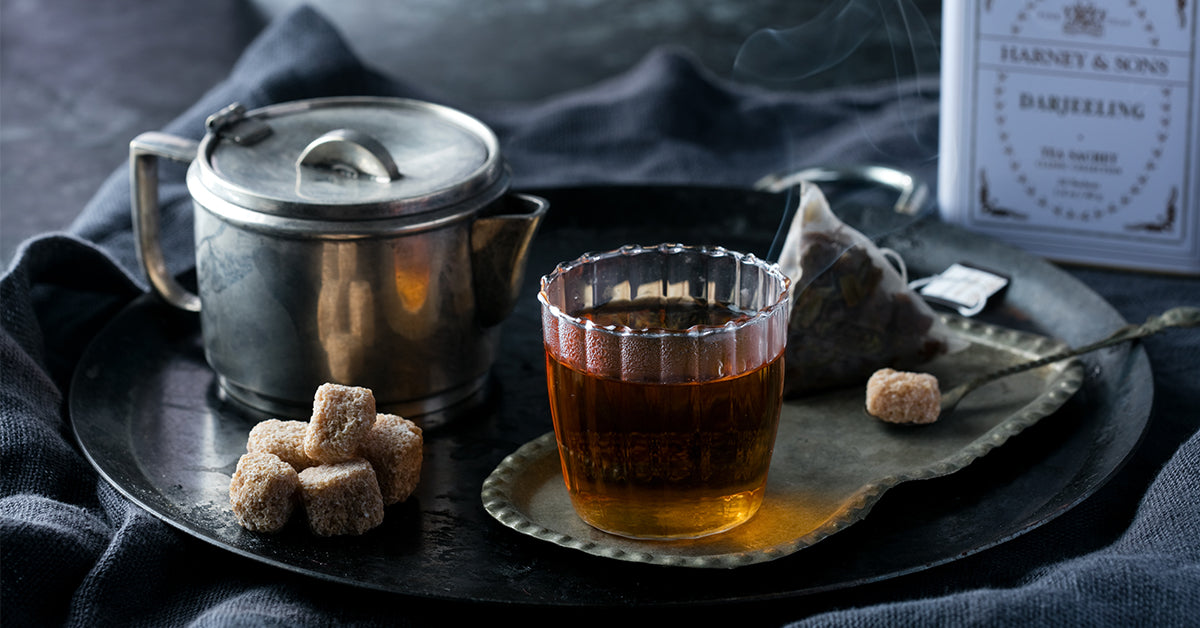We continue our tour of four of China’s most prominent tea provinces with our third stop in beautiful Zhejiang, China’s leading tea producer.
Zhejiang province is in the middle of the east coast of China in a region known as the Golden Triangle. It borders Shanghai, Jiangsu, Anhui, Jiangxi, and Fujian. Zhejiang’s population is around 57 million, the tenth highest in China, and its capital is Hangzhou, a popular tourist attraction. Zhejiang province is ancient, and Hangzhou was once the largest city in the world.
The Qiantang River runs through the province; Zhejiang is named after the river. Before you say now, Mike, “Qiantang” and “Zhejiang” aren’t the same word, hang on. Historically, the river was called the Zhe Jiang (“Crooked River”). Today, it is referred to as the Fuchun River inland and the Qiantang River at the estuary of Hangzhou. But back in the day, “Zhe Jiang” morphed into “Zhejiang.” Moving along.
The topography of this coastal province is stunning, with steep, rugged mountains and hills accounting for more than two-thirds of the area. My friend Lu says that 90% of Zhejiang is mountains. Lu graduated from Zhejiang University’s famous Tea Science Institute. He has helped us since 1996. Now his son has joined him and we call him Lu Two.

As with all great tea-growing climates, Zhejiang’s is primarily subtropical -- and wet! It begins to rain in the spring and then it really starts to rain during the peak of the summer months -- typhoons are not uncommon in Zhejiang during the late summer. But the fall weather turns clear and the temps are generally comfortable. Winters can be cold, especially inland.
When it comes to culture, Zhejiang has it in spades. It has been known as one of the great cultural and literary centers of China for centuries. It is also one of the more affluent provinces in China. Tourists flock to Hangzhou where the most popular attraction is West Lake, a lake in the center of the city featuring a park and scenic views. There is a saying in China: “In heaven there is paradise, and on earth there is Hangzhou and Suzhou.” (Suzhou is a city outside Shanghai known for its beautiful gardens.) I always make sure to stay near the West Lake and walk along it in the mornings. The architecture near the lake is special and old school.
One of the museums is the National Tea Museum, that sits above the West Lake on the way to the one and only Lung Ching (meaning well of the Dragon or Dragon well). And the most famous exhibit (in my eyes) is a tin of Harney & Sons Queen Catherine tea. Back story, it was given by the President of Portugal to the President of China many years ago.

Image: West Lake
If you visit Zhejiang, don’t expect to find Stinky Tofu street food or the trademark spicy dishes of Hunan. Zhejiang cuisine, one of the eight regional cuisines of China, is mostly a reflection of their culture. You’ll find dainty, artistic, colorful, sophisticated, and feng shui dishes brought to your table, also with an emphasis on the medicinal qualities of the food, based on centuries-old medicinal food traditions. If you prefer fish and seafood over heat and powerful odors, Zhejiang cuisine is right up your alley. I always make sure to get some West Lake shrimp slowly steeped in Lung Ching.

Image: Fresh Chicken
While rice is Zhejiang’s primary agricultural export, we count on this province for some of the best green teas in the world. There are four principal tea districts: Pingshui, the home of Gunpowder; Qiandao which is a mountainous area about 2 hours south of Hangzhou, Wenzhou, in the southeastern hilly region; and Hangzhou, which produces Zhejiang’s most famous tea, Longjing, also known as Dragon Well Tea and the related other teas within an hour of it.
Zhejiang is the capital of green tea. When we visit, most times we make it to Hangzhou, which, as I’ve already stated, is a beautiful city with West Lake and teahouses that dot the shore. On the hills just outside of town is the Longjing, or Lung Ching, growing area. It is a bit like going to Napa Valley during the harvest. Crazy busy with tourists during the Spring Ching Ming tea season! We buy a lot of tea from a man named Mr. Wang. He often treats us to a fresh chicken dinner; when we say fresh, we mean really fresh!
2 hours south of Hangzhou is where we get the green tea that serves as the base of so many flavored teas from Zhejiang. We make sure that it is sweet and light and has no fish flavors that the other customers demand. (Yes, we’re serious!) We want your flavored tea to come across clearly.
A lesser tea that originates in Zhejiang is Gunpowder. It comes from the Pingshui region, and it is dried in hot rolling ovens, thus giving a charred leek flavor to the summer tea. Since this tea is stable for a long period of time, it was the main Chinese green tea exported. So it is most well known in our country. Also, it became the base of the tea Arabs drink especially with mint, what we call Morrocan Mint.
It is only after vacuum packing and air freight became common, that we were able to offer the delicate and exquisite green teas that Zhejiang makes. The area around Anji makes one of them.

Image: Workers picking buds for Anji Baicha
Anji is located one hour north of Hangzhou and it makes great, great green teas: Anji White is an example of that green tea (yes, it is confusing, just go with it). However, they also make a black tea that is full of umami, giving sweetness and body. As with all teas, where tea is grown and how it is produced makes all the difference. Our job is to source only the finest for our Harney customers!
One trend we have noted is that they are starting to make great black teas from the same areas that make the great green teas, such Anji or Tong Mu.

Image: Anji Baicha on drying racks at a processing plant
Here are teas we carry that are sourced from Zhejiang. We hope you’ll give one or two or all of them a try! Since we know the Hangzhou area so well, we are trying to broaden our knowledge, so we tried teas from Xianju.
- Meijiawu Lung Ching. Lung Ching (also spelled “Lungjing”) is to Chinese green teas what French Champagne is to sparkling wines: the standard against which all others are measured. With almost no tips, it has the classic Chinese green tea qualities of steamed bok choy and roasted nuts. This is from one of the original four locations outside of Hangzhou. We buy this tea from a man named Mr. Zhao who we’ve been buying from for many years, so you can count on this being the real tea.
- Chun Lu. An often overlooked gem of a green tea from Zhejiang, this early spring tea is loaded with amino acids and has a vibrant green color without any silvery tip. Also, the shape is unusual with the thick curl to the tea. The special flavor reminds us of light yet refreshing flavors in cucumbers. Several years ago my wife, Brigitte, and I took a trip to the hills and waters of Thousands of Islands. The sun was out and the weather bracing as we drove around the curves that follow the scenic shores of this large reservoir. Finally after hours of driving, we arrived at a storybook village: Chun Lu. The hills rise from the lake's edge up to the hills. There were enough stone walls to melt a New Englander's heart.

Image: Visiting the Qiandao (Thousand Islands) tea gardens)
- Organic Gunpowder. When my dad, John Harney, started in the tea trade over 30 years ago, there were just two green tea offerings from China: Gunpowder and Chun Mee. Though our selection has expanded greatly since then, many people are very familiar with and enjoy Gunpowder's sharp, charred flavor.
- Anji Black. Anji is an ancient tea from Zhejiang. It has recently been reintroduced in black and green form, and has rapidly become one of the most sought-after teas in China. Our customers especially love this enchanting Anji Black version. It stole our hearts! (See also Anji Baicha green tea).

Image: Dry heat comes up from small holes in the pans to dry the tea for Anji
About 20 years ago, this special cultivar was found in the northern Zhejiang Province, and it has been a big hit ever since. People, including teamen, wax enthusiastically about the great combination of flavors, sweetness and body. During a trip to Anji I was enjoying some lovely green tea and asked to have some black tea made at the same tea factory. It was delicious, so I brought some back for your (and my own!) enjoyment. It is a stellar blend of mouth-filling, tongue-coating flavors along with honey. We think you will love it.




